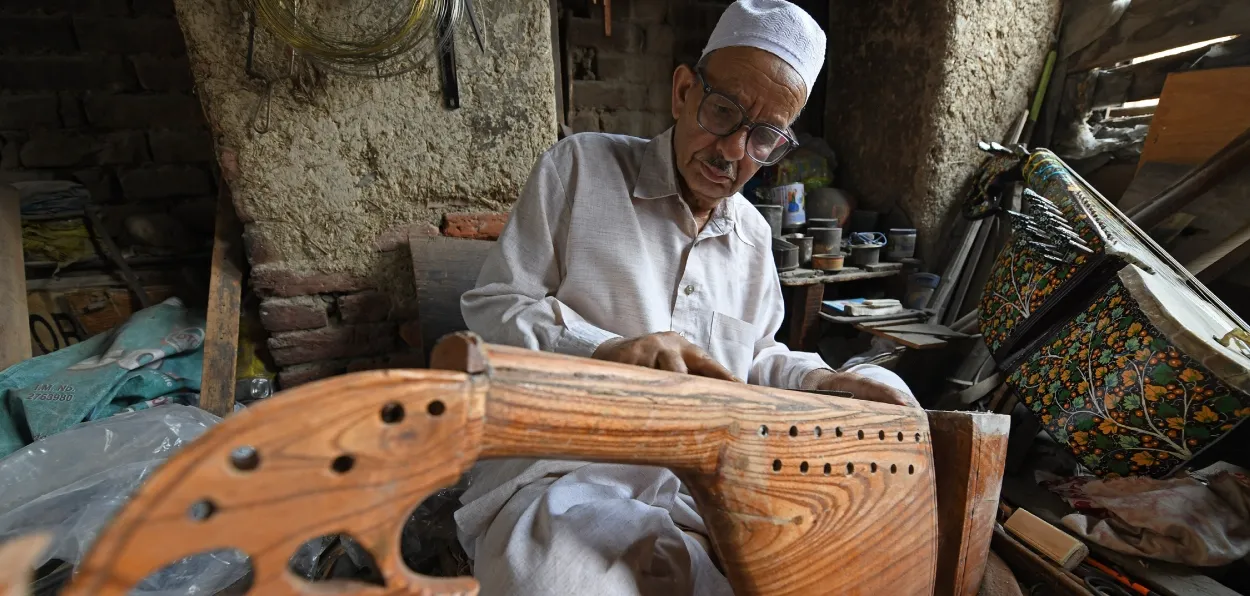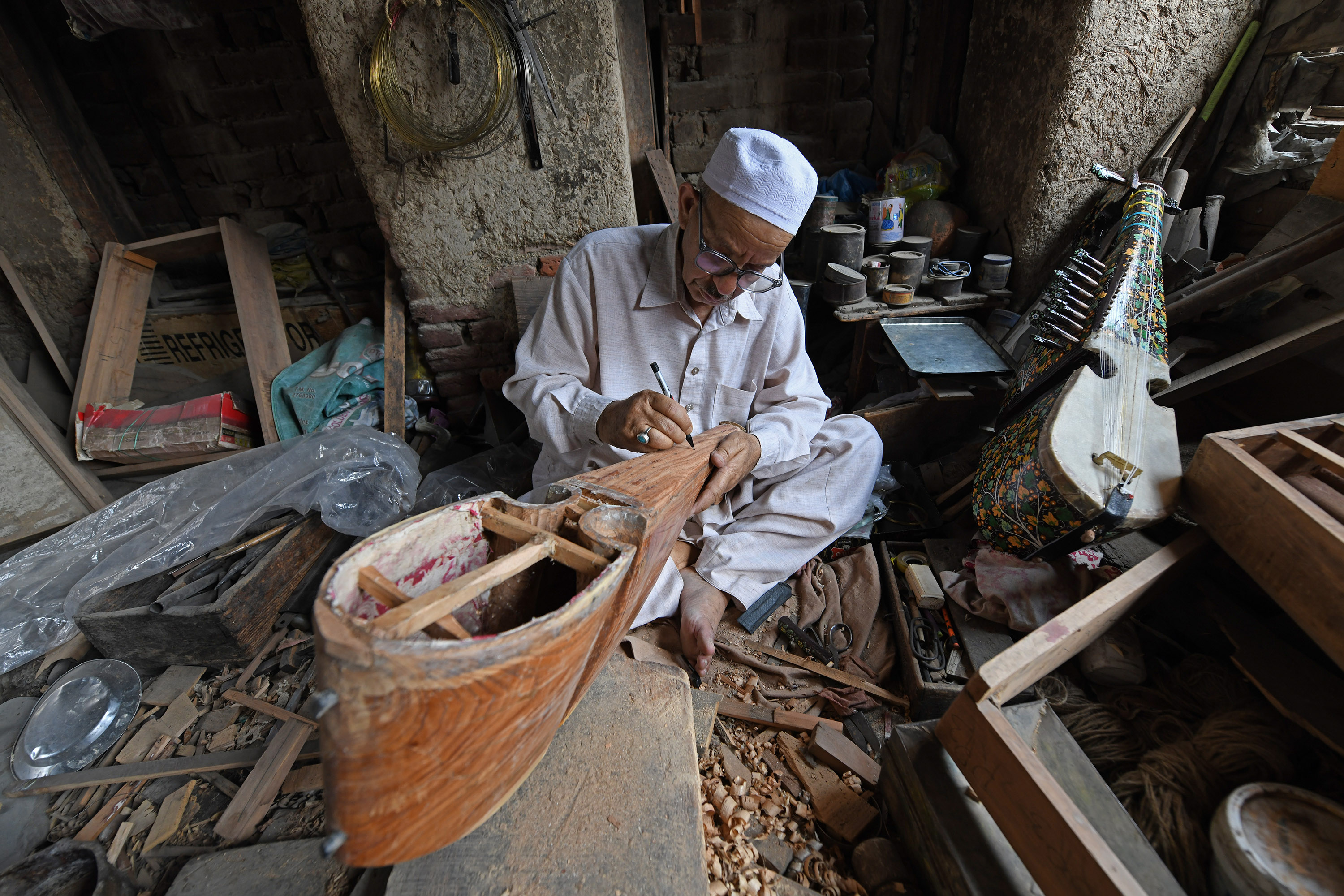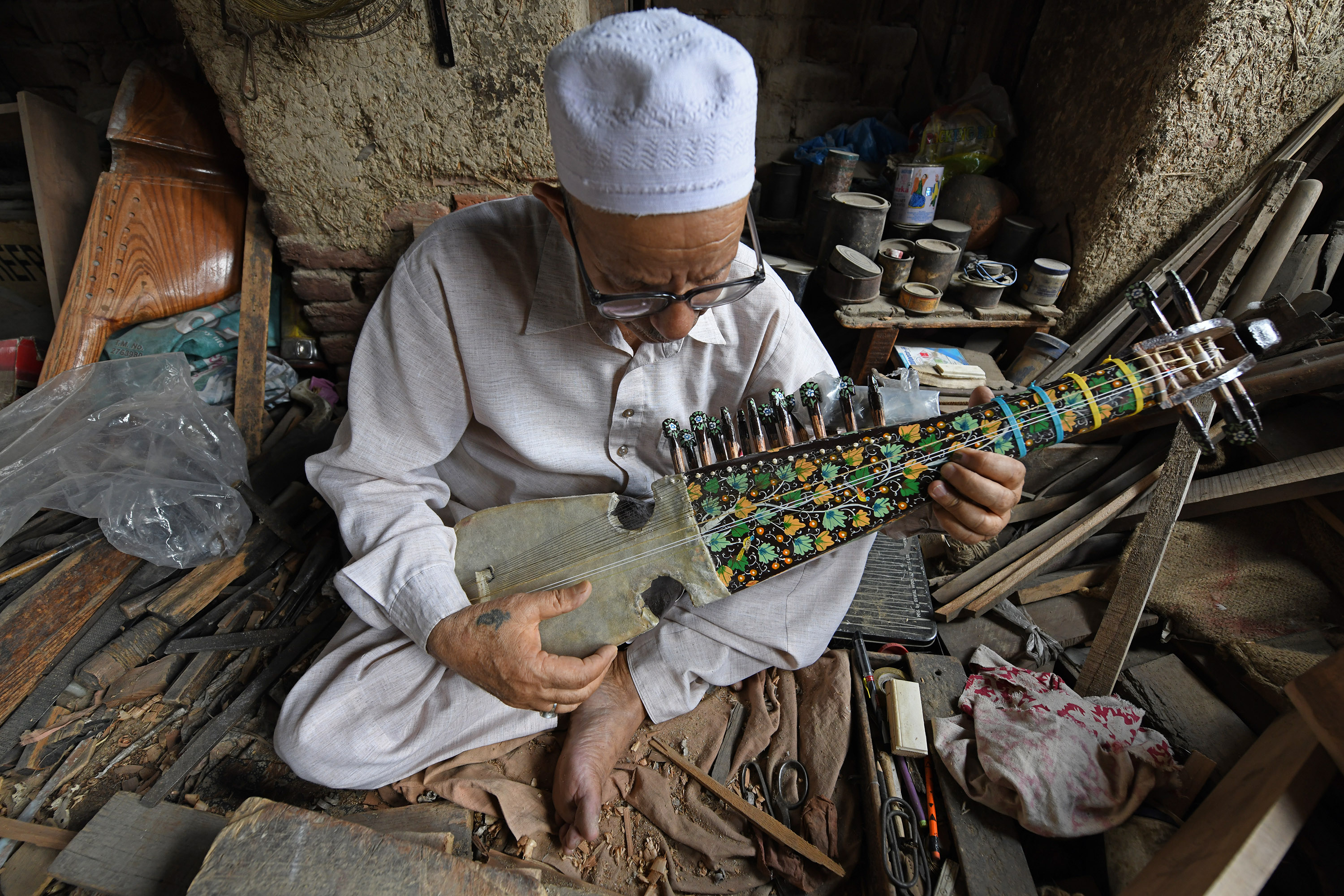
Basit Zargar/Srinagar
In a dilapidated room located on the banks of the river Jhelum in Srinagar an old man fidgeting with strings and pegs, breaking the silence looming over the mud walls and debris on the floor. Light comes in through a small window, illuminating his aging face and withered fingers, which feel along the rough contours of an unfinished santoor.
It;'s here that for three centuries this man's ancestors have made Kashmir's best santoors and rababs,traditional stringed instrument.
Today, Ghulam Mohamed Zaz, 74, is the last in the line. After him, it is feared, that this room – along with an entire tradition – will fall into obscurity.
 Ghulam Mohamed Zaz making a Santoor
Ghulam Mohamed Zaz making a Santoor
"We have been making rababs and santoors for the last 300 years," Zaz said. "We made the first santoor in Kashmir; All the artists of the valley played on our santoors."
Zaz represents the eighth generation of Kashmir's family of santoor and rabab-makers. For three centuries, his family provided the valley's most distinguished Sufiana musicians with their instruments.
While his family tried to forge perfect instruments on candlelight, Zaz spent many nights looking at them and learning to master the art. “I was 15 when I made my first santoor. I observed my father so keenly that I just picked up a piece of walnut wood and made a santoor,” Zaz recalls.
"I would sit across from my father and grandfather and imitate them till I learned to make all the instruments," Zaz remembers.
The santoor, (a Persian word meaning a hundred strings) came to Kashmir with the Persian invaders of the 15th century. Various versions of the santoor exist in many parts of the world, depending on number of strings.
The Persian santoor has 72 strings, the Chinese 45, and the German 135," Zaz explains.
The Kashmiri santoor is a trapezoid-shaped hammered dulcimer, the hundred strings of which are struck with a pair of curved mallets known as mezrabs. The santoor, along with the rabab, is an integral ingredient of Kashmiri folk and Sufi music.
 Ghulam Mohammad Zaz playing a Rabab
Ghulam Mohammad Zaz playing a Rabab
Over the years, as Sufiana music brought sound and beauty to the imperial courts and gatherings of the rich, the Zaz family enjoyed the limelight. It was another time," he remembers proudly, so different from today. Everyone respected us for the art we had, he recalls. "We were treated as artists and paid handsomely for our art.
Today, amid the changing times and fast-paced life in Kashmir, Zaz feels left behind in his decaying shop, where customers remain rare and santoor connoisseurs even rarer. He points around the room and ruminates on the old days when his second-story shop – like his life – was brighter and offered more promise. The walls of the room are now blackened from decades of fire used by the family to heat walnut wood for shaping it.
Sitting amid unfinished rebabs, santoors, and sarangis, Zaz feels the world has forgotten him.
"Everyone is making money," he asserts. "They come here, click pictures, and write about me, and they all make money. But I get nothing. I doubt if it is worth all the work now." Zaz has three daughters who never had any inclination to pick the art.
Sometimes, months will pass before Zaz sells a single rabab or santoor.
ALSO READ: Sanskrit is not a dead language: Dr. Rezvi Sultana of Assam
"Now much of my business depends on tourists and foreign customers," he notes.
To make ends meet, Zaz also repairs other string instruments, including sarangis and violins.
